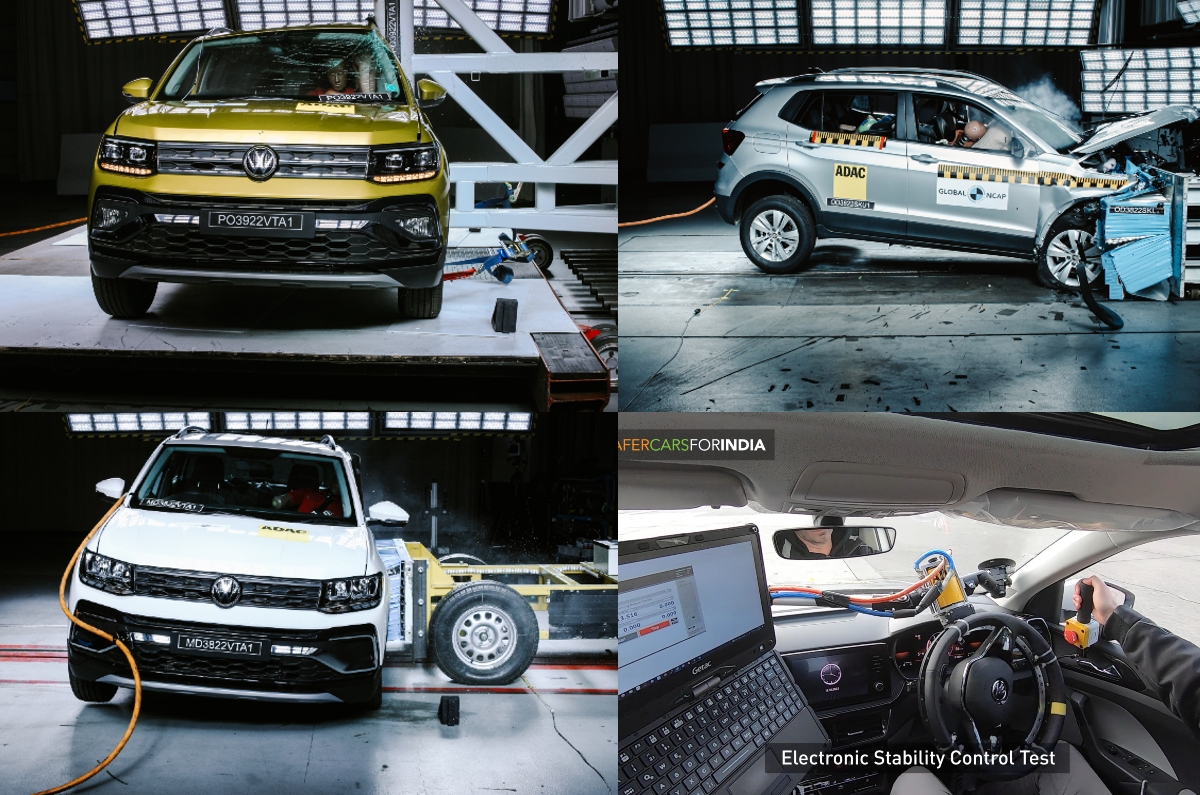
The two SUVs are the first to be tested under the new GNCAP protocols that also tests for side impact protection and requires ESC as standard.
The India-spec Skoda Kushaq and Volkswagen Taigun have both scored a 5-star rating under the new upgraded Global NCAP test protocols. Interestingly, both midsize SUVs are the first vehicles to achieve a 5-star rating for both adult and child occupants.
- Both cars built on the same platform and at the same plant
- Both vehicles performed well under side impact tests
- Points are now awarded for front and rear seat belt reminders
Skoda Kushaq, Volkswagen Taigun GNCAP crash test rating
The Kushaq and Taigun are the first cars to be tested under the updated testing protocols and have received a 5-star rating, scoring 29.64 points in the adult occupant protection test out of a maximum of 34 points. Additionally, they also scored very well in the child occupant protection test, scoring 42 points out of a possible 49.
Testers rated the protection Kushaq and Taigun offered to the driver’s and passenger’s head and neck as good. However, the driver’s chest showed adequate protection, while the passenger’s chest showed good protection levels. Testers also noted that both SUVs offered ISOFIX mounting points on the outer rear seats.
As per the new testing procedure, during the side impact tests with a deformable barrier, GNCAP used a two-airbag version of the two SUVs, while a six-airbag version was used for the side pole impact test. In the former, the two scored 14.5 points out of a possible 17, while they received an ‘OK’ rating for the latter.
GNCAP new testing protocol
Under Global NCAP’s new protocol the 5-star rating is only given to a car if it secures the required score while also meeting the following conditions.
ESC Requirement – Electronic stability control must either be fitted to the bestselling variant or should be present in as many units across the range as the total sales volume of the bestseller. GNCAP also requires that within two years of the test publication, 100 percent of the variants must offer ESC as standard.
The ESC test is done by a tester controlling the vehicle from the inside triggering the mechanical steering system to ensure accuracy and standardisation of steering input.
Pedestrian Protection – All variants of the model tested must also pass UN127 or GTR9 validation test conditions for pedestrian protection.
Pole Side Impact – A side head protection system must be offered in a minimum of 30 percent of the total production volume for this year and by 2026 this will move up to 100 percent.
Seat Belt Reminder Points – Cars that offer a front and rear seat belt reminder system qualify to secure additional points; 0.5 points are awarded for each seat belt reminder and the maximum score is 2. However, all rear positions must meet the requirements to score any points.
Can old and new GNCAP test scores be compared?
Comparing vehicles tested under the old protocols with vehicles tested under the new protocols becomes difficult as the whole process has been overhauled. A star rating under the older protocol is reflective of performance in a front crash rating, however, a star rating under the new protocol is reflective of a more rounded protection that takes into account side impact as well as active safety like ESC which helps prevent an accident in the first place.
Also see:
Cars, SUVs under Rs 10 lakh in India with highest GNCAP scores
